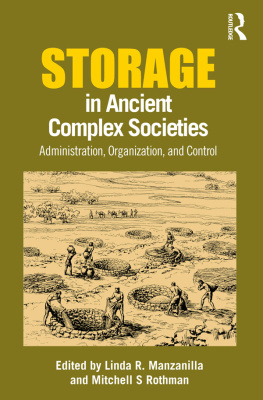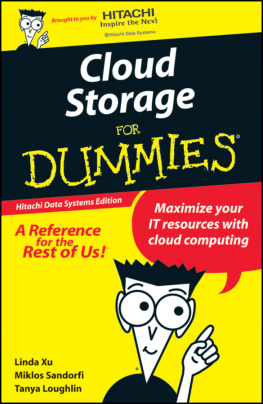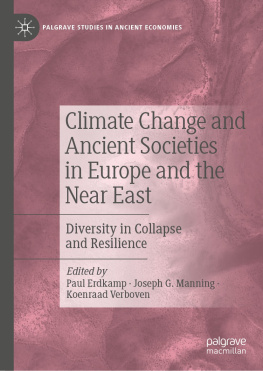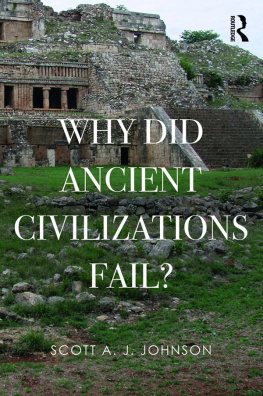STORAGE IN ANCIENT COMPLEX SOCIETIES
First published 2016
by Routledge
711 Third Avenue, New York, NY 10017
and by Routledge
2 Park Square, Milton Park, Abingdon, Oxon OX14 4RN
Routledge is an imprint of the Taylor & Francis Group, an informa business
2016 Taylor & Francis
The right of Linda R. Manzanilla and Mitchell S Rothman to be identified as the authors of the editorial material, and of the authors for their individual chapters, has been asserted in accordance with sections 77 and 78 of the Copyright, Designs and Patents Act 1988.
All rights reserved. No part of this book may be reprinted or reproduced or utilised in any form or by any electronic, mechanical, or other means, now known or hereafter invented, including photocopying and recording, or in any information storage or retrieval system, without permission in writing from the publishers.
Trademark notice: Product or corporate names may be trademarks or registered trademarks, and are used only for identification and explanation without intent to infringe.
Library of Congress Cataloging-in-Publication Data
A catalog record for this book has been requested
ISBN: 978-1-62958-302-0 (hbk)
ISBN: 978-1-315-52097-1 (ebk)
Typeset in Minion
by Integrated Books International
CONTENTS
Linda R. Manzanilla
Mitchell S Rothman
Mitchell S Rothman and Enrica Fiandra
Ianir Milevski, Eliot Braun, Daniel Varga, and Yigal Israel
Tate Paulette
Thomas Pozorski and Shelia Pozorski
John R. Topic
R. Alan Covey, Kylie E. Quave, and Catherine E. Covey
Frank Salomon, Gino de las Casas, and Vctor Falcn-Huayta
Linda R. Manzanilla
Silvia Garza-Tarazona, Claudia Alvarado-Len, Norberto Gonzlez-Crespo., and Beatriz Palavicini-Beltrn
Michael P. Smyth
Cristina Vidal-Lorenzo, Maria Luisa Vzquez-de-gredos-Pascual, and Gaspar Muoz-Cosme
Jos Luis de Rojas
Mitchell S Rothman and Linda R. Manzanilla
Figures
Tables
Linda R. Manzanilla
T he evolution of societal complexity is a major subject of archaeological inquiry. This volume addresses storage as one archaeological indicator of evolving organization and administration systems, in key areas of emergence of complex societies: the ancient Near East, Mesoamerica, and the Andean Region. It derives from a Society for American Archaeology (SAA) Annual Meeting Symposium that I organized in 2010, where we discussed cross-cultural evidence of storerooms, tokens, and administrative devices and their implication for social behavior and institutions.
The literature on storage as an independent variable for organization and administration is not vast (see ). One example, devoted to Mesoamerica and northern Mexico, is Almacenamiento prehispnico del Norte de Mxico al Altiplano Central (edited by Sverine Bortot, Dominique Michelet, Vronique Darras, Universit de Paris I-CEMCA, 2012). However, no comprehensive, much less cross-cultural, volumes on storage as an analytical category in analyzing societal evolution exist.
In putting together the SAA session, I chose three areas where the control of goods and people may be followed as hallmarks of different types of societies. Through comparison of their evolutionary trajectories, we can see commonalities that Steward believes are apparent even in multilineal pathways (see Introduction). I also emphasized to session participants that we should have in mind what types of goods are stored, in what type of facility, in what social context, and how the goods are distributed at what intervals. The group was focused on many cases on which administrative mechanisms develop to control the flow of the stored goods. These are the main subjects of this volume: how archaeologists study storage and its role and its analytical significance in the evolution of systems of control, administration, and societal organization.
In Mitchell Rothman provides a theoretical look at the relationship between storage behavior and other aspects of culture in societies from those of hunter-gatherers to the state.
Following that, the first part of the volume is devoted to Near Eastern examples, where storage facilities have been present since the onset of sedentary life, both at familial and communal scales; these facilities will later be incorporated into monumental ritual and secular structures, which organize redistributional and trading networks of state-level organizations. Unique to the Near East is a set of independent control mechanisms, seals and seal-impressed clay locks on doors and containers. As the use of these control mechanisms change over time, they develop into a bureaucratic tool to account forthat is, auditthese movements. Ultimately, this system is enhanced by a system of written, so-called Uruk IV tablets, which increase administrators ability to collect and store information.
In , Mitchell Rothman and Enrica Fiandra describe changing storage methods and their relationship to elaborating control systems from 4200 to 3000 BC, which ultimately trace a trajectory to state-level societies. Examples include Tepe Gawra in the piedmont of northeastern Iraq, Arslantepe in southeastern Turkey, and Uruk-Warka, the worlds first great city in southern Iraq. All are involved in local systems of control, storage places, and in broad geographical trading networks. In each, a correlation of the use of seals and sealings as audited administrative mechanisms and eventually clay tablets and changes in storehouses and storerooms confirm the analytical power of storage to understand evolutionary changes.
In , Ianir Milevski, Eliot Braun, Daniel Varga, and Yigal Israel analyze a late third millennium BC formal silo system at the site of Amazia, Nahal Lachish, between the Negev and first Judean Hills in Israel. This is early evidence of a surplus production system, presumably of grains that the author describes as a redistributive system, locally, but one also in contact with state-level Egyptian colonies with more formal, centralized control systems. These systems of storage reflect an evolution of centralized storage from earlier types in the same region as outlined in the final chapter.
In Tate Paulette continues where Rothman and Fiandra left off. He uses archaeological and written evidence to explore the central role played by grain and, in particular, grain storage within this broader struggle to define the contours of a rapidly evolving political economy. Over the course of the third millennium BC, Mesopotamia was swept up in a wave of political experimentation, economic restructuring, and ideological invention. Across the region, newly fashioned states struggled to establish control over the resources, the labor, and the allegiance of urban and rural populations.
Our second part is devoted to the Andean Region, a region where environmental phenomena cause severe risks for sedentary communities, and where storage is a key factor to face them.
In perhaps used to stamp cloth. This chapter puts these features in context by first describing the complex polity that occupied the Casma Valley of Peru during the Initial Period (18001400 BC). Subsequent sections provide details about storage structures and especially their modular architectural form, which became emblematic of bureaucratic power and control within the polity.
In , John R. Topic shows the relations among data-recording devices, a system of storage units, and the structure of the Chim and Inka states of Peru. He begins by describing the Inka
Next page








